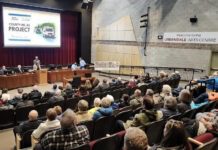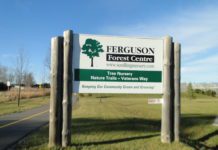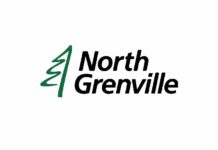by Deron Johnston
In the new federal budget announced on March 22, a large number of non-profit and charitable housing organizations were cheering, as the federal government announced that they’ll be investing $11 billion over the next eleven years in affordable housing. The money will be spent on building new housing, fixing existing housing, encouraging housing providers to pool resources with private partners, and to allow Canada Mortgage and Housing Corporation (CMHC) to provide more direct loans at preferred lending rates to municipalities. The federal government plans to free up more federal land for additional housing, to add more housing for the north and to provide housing units to indigenous peoples off reserves.
“Affordable housing” is a term that is usually used to describe a range of categories of social housing. For example, according to the United Counties of Leeds and Grenville [UCLG] website, “affordable housing” refers to housing that is not rent-geared-to-income, but rather 80% of the average rent in a given market according to CMHC. However, you must qualify for rent-geared-to-income to be eligible for these affordable housing units. ‘Market Rent Housing’ is a category where units have rents at the low end of private market rents and are provided by the UCLG Housing Department and some non-profit housing providers.
Another category is the Rent-Geared-To-Income Housing, which has the following the sub-categories:
“Public housing”: units maintained by the UCLG and are geared-to-income. ‘Non-profit housing’: housing owned and maintained by a non-profit corporation and managed by a volunteer board of directors. ‘Rent supplement housing’: units provided by a private landlord with agreements with the UCLG where a monthly subsidy is paid to the landlord. “Co-operative housing” is housing which requires participants to have memberships and participate in the managing, governing and maintaining of the units within the co-operative property or building.
One of the major challenges around affordable housing is the length of time it will take to build new housing units and to repair existing units across Canada. It’s possible it could take years to have a significant impact in these areas. What the United Way Toronto & York Region and the Canadian Alliance to End Homelessness are proposing is to increase funding for “portable housing benefits”, or ‘rent supplement’ programs that would allow people to get help now, rather than wait years for these new or repaired housing units to be ready. This would give the federal government time to work with the provinces and municipalities to find out what their specific needs are and how to best use funding.
Currently, there are not enough social housing units to meet the demand here in North Grenville, which is the fastest growing municipality in the UCLG, with a current population of 16,350. UCLG has almost 670 public housing units in their inventory. Unfortunately, these units are not necessarily in the locations where they’re needed most. Prescott for instance, has a population of 4,500 and currently has a surplus of social housing to the tune of thirty three units, according to their mayor, Brett Todd. Over the past two years in Prescott, fifteen properties have been designated surplus and, once current tenants leave, they will be sold and that money will be used by the UCLG to build more social housing elsewhere. This transition could take years, and there are people who can’t afford to wait that long. In a recent positive development, the UCLG bought properties at 201 and 203 Prescott Street in Downtown Kemptville and turned them into social housing units.
While everyone waits for the federal funding to filter down to the municipalities that need it, and then wait for the repair of existing housing units and the building of new ones, the anticipated need for social housing will increase dramatically. It appears that the two best solutions for North Grenville are for the UCLG to continue to acquire properties for social housing purposes locally, and for the UCLG to increase funding for ‘rent supplement housing’.
Beyond the human cost, poverty and homelessness are a financial burden to all Canadians. The United Way of Toronto & York Region funded a report that showed that the effects of poverty in Toronto alone cost $5 billion annually. According to the Canadian Observatory on Homelessness, homelessness costs Canadians $7 billion annually. That sobering information makes the purchase of a few buildings, and some rent subsidies, seem like a real bargain to me.








